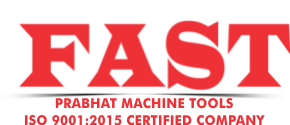An Introduction To Time
In this article we are going to examine what time series analysis is, outline its scope and learn how we can apply the techniques to various frequencies of financial data. Because time series analysis includes many categories or variations of data, analysts sometimes must make complex models. However, analysts can’t account for all variances, and they can’t generalize a specific model to every sample. Models that are too complex or that try to do too many things can lead to lack of fit. Lack of fit or overfitting models lead to those models not distinguishing between random error and true relationships, leaving analysis skewed and forecasts incorrect. When organizations analyze data over consistent intervals, they can also use time series forecasting to predict the likelihood of future events. It can show likely changes in the data, like seasonality or cyclic behavior, which provides a better understanding of data variables and helps forecast better.
In practice, the trajectory could be linear, quadratic, exponential, cosine or sine , and the like. The construction of economic time series involves the estimation of some components for some dates by interpolation between values (“benchmarks”) for earlier and later dates. Interpolation is estimation of an unknown quantity between two known quantities , or drawing conclusions about missing information from the available information (“reading between the lines”). Interpolation is useful where the data surrounding the missing data is available and its trend, seasonality, and longer-term cycles are known. This is often done by using a related series known for all relevant dates. Alternatively polynomial interpolation or spline interpolation is used where piecewise polynomial functions are fit into time intervals such that they fit smoothly together.
In Python it is very popular to use the pandas package to work with time series. It offers a powerful suite of optimised tools that can produce useful analyses in just a few lines of code. In effect, I was referring to forecasting models, not to real-time computing systems . And I think now you get me out of that doubt, because I came to think that it was some special group of algorithms that worked for real-time forecasts. if so why since the test data has the variables for the forecasting time scale also can’t we handle those with regression ?. Classical methods are better than most “ml/dl” methods on most univariate time series datasets. I’ve a requirement of sales forecasting for a year to do it in R with machine learning .
Stock Market Analysis
ARIMA can be used, for instance, to forecast stock prices or earnings growth. Curve fitting is the process of constructing a curve, or mathematical function, that has the best fit to a series of data points, possibly subject to constraints. Curve fitting can involve either interpolation, where an exact fit to the data is required, or smoothing, in which a “smooth” function is constructed that approximately fits the data. A related topic is regression analysis, which focuses more on questions of statistical inference such as how much uncertainty is present in a curve that is fit to data observed with random errors. Fitted curves can be used as an aid for data visualization, to infer values of a function where no data are available, and to summarize the relationships among two or more variables. Time series data is used in time series analysis (historical or real-time) and time series forecasting to detect and predict patterns — essentially looking at change over time.
Assumptions can be made about these components both in behavior and in how they are combined, which allows them to be modeled using traditional statistical methods. The optional variability in the observations that cannot be explained by the model. The optional repeating patterns or cycles of behavior over time.
How To Identify Seasonality
However, frequency analysis is more difficult to understand, so time domain analysis is generally used outside of the sciences. Analysis in the frequency trading strategy domain is often used for periodic and cyclical observations. Common techniques are spectral analysis, harmonic analysis, and periodogram analysis.
I am a medical specialist with further training in research and statistics . In our medical settings, time series data are often seen in ICU and anesthesia related research where patients are continuously monitored for days or even weeks generating such data.
Why Organizations Use Time Series Data Analysis
There is no minimum or maximum amount of time that must be included, allowing the data to be gathered in a way that provides the information being sought by the investor or analyst examining the activity. A time series is a sequence of data points that occur in successive order over some period of time. This can be contrasted with cross-sectional data, which captures a point-in-time. This section looks at several real-world cases for applying time series models. The autoregressive component is the relationship between the current dependent variable the dependent variable at lagged time periods. If the time series plot suggests autocorrelation, then further statistical tests can be used to formally test for autocorrelation. Though statistical methods and tests should be used to test for structural breaks, time series plots can help for preliminary identification of structural breaks in data.
- Time series involves repeated sampling of the same data over time.
- The I (for “integrated”) indicates that the data values have been replaced with the difference between their values and the previous values .
- This adds an honesty to time series forecasting that quickly flushes out bad assumptions, errors in modeling and all the other ways that we may be able to fool ourselves.
- Perhaps test a suite of algorithms and discover what works well or best with your specific dataset.
- Background theory and knowledge of the data can provide insight into the presence and frequency of seasonality.
- It’s always better to define the function for its repeated use rather than writing whole code every time.
In the context of statistics, econometrics, quantitative finance, seismology, meteorology, and geophysics the primary goal of time series analysis is forecasting. In the context of signal processing, control engineering and communication engineering it is used for signal detection. Other application are in data mining, pattern recognition and machine learning, where time series analysis can be used for clustering, classification, query by content, anomaly detection as well as forecasting.
Resampling, Rolling Calculations, And Differencing
Once we have the final ARIMA model, we are now ready to make predictions on the future time points. We can also visualize the trends to cross validate if the model works fine.
Time series forecasting is an important area of machine learning that is often neglected. Forecast and Predict Future Values – In order to trade successfully we will need to accurately forecast future Currencies forex asset prices, at least in a statistical sense. We will do predictions on ARIMA model and also reconvert the predictions back to original form because we build our model on log transformed dataset.
Time Series
Where F(t+1) is the forecasted value at time (t+1), N is the past observations. Here, our p-value is 0.07 which is less than 0.05 and Test Statistics value lies in between the Critical value (10%) and Critical Value (5%) and also Rolling Mean and Rolling Standard deviation is constant with time.
Time series forecasting is the use of a model to predict future values based on previously observed values. Interrupted time series analysis is used to detect changes in the evolution of a time series from before to after some intervention which may affect the underlying variable.
However, there is little guidance in the literature about how to fit these models in the context of ITS analysis. Given the quantity and complexity of health data now being collected and made available for research, ARIMA has become an increasingly useful tool for researchers interested in evaluating large-scale interventions. Similar to traditional time-series analysis, latent trajectory models look at the changes for a specific object or phenomenon of interest through time. Unlike traditional regression models that fit relationships based on all data points, LTMs fit a quantitative trajectory for the repeated measurements of each study unit over time. The assumption is that the change over time can be described by a suite of parameters (e.g., intercept and slope), and these parameters can be explained by a set of site-specific independent variables. The underlying assumption is that temporal changes of all subjects follow a certain latent trajectory, and observed data are derived from such latent trajectory under some perturbations or deviations.
As the variance appears stable over time, no data transformation is needed. If the variance is changing over time, a log-transformation should be applied. Time series data can bevisualized Retail foreign exchange trading in different types of chartsto facilitate insight extraction, trend analysis, and anomaly detection. Time series visualization and dashboarding tools include the InfluxDB UI and Grafana.

